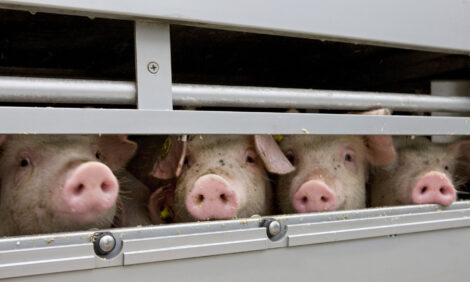



CME: Hog Profits Expected to Improve in Coming Months
US - In this livestock report we first discuss cattle feeding returns, breakeven sale prices, and prospects for the next few months, write Steve Meyer and Len Steiner.Then we turn to the estimated farrow-to-finish hog returns. Returns used here are a monthly look at profitability based on total economic costs and do not assume any type of risk management.
Estimated cattle feeding returns for steers sold in January remained mired deep in red ink. However, losses were dramatically less than during late 2015. In fact, red ink easily declined by $200.00 per steer between closeouts in January versus just one month earlier in December.
Looking in the “rear view mirror” at the second half of 2015 gives a different picture than looking “out the windshield” ahead to the next few months.
Calendar year 2014 was by most accounts the second best year ever in terms of cattle feeding profitability and 2015 was by all accounts the worst year for commercial operations in the High Plains.
This year (2016) looks to be rather typical, that is not one of the best but many pens of cattle at well managed feedlots should turn a profit during the next few months.
Cattle markets are setting-up in some important ways to be much different than a year ago. Most importantly, feeder animal prices (e.g. 700 -to 800-pound steers) have returned to much more normal price levels relative to those of fed animals.
In the Southern Plains that market premium for last week was about $24.00 per cwt. compared to over $51.00 a year ago. The peak weekly premium last year was over $82.00 per cwt.
Last year, the huge cost of feeder animals could not be overcome by rather inexpensive feedstuffs. From a cattle feeder perspective, the cost of that incoming feeder animal is important in their decision-making.
The very high cost of cattle to go on-feed and replace traditionally market ready animals already in the feedlot was a major contributor to the slow marketing rate in 2015, which was a driver of the cattle price collapse last fall. Of course, other factors also facilitated that abrupt price decline.
Incentives to delay marketing of finished cattle and create associated problems have dissipated significantly. Still, the basic incentive provided by packers to produce large and fat cattle has not changed much in the last 12 months, according the reports provided by packers to USDA’s Agricultural Marketing Service (per Market News weekly report ).
Using recent prices of 700-to 800-pound steers in the Southern Plains, the LMIC estimated breakeven sale price for cattle to be sold in coming months will be below $130.00 per cwt., the lowest since animals closedout in October 2014.
Based on those breakeven levels, most fed animals to be sold in April and May are projected to turn a profit.
Turning to hog producer profitability, the Iowa State University (ISU) estimates are the “gold standard” and the calculations are by Dr. Lee Schulz.
ISU estimates put returns per animal sold by a farrow-to-finish operation in January of this year at -$12.83 per hog. That was the third consecutive month of losses.
Prior to late 2015, hog producers had mostly been profitable, especially in 2014. Looking ahead, as spring approaches ISU calculated hog returns will likely be back in the black and the next period of prices not covering total economic costs of production is likely to be during the last few months of this year.








